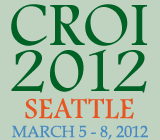 Getting rid of acute hepatitis C virus (HCV) infection once—whether it is cleared by strong immune response during the initial months of infection or cured with treatment — does not protect HIV-positive men who have sex with men (MSM) against reinfection with the virus, according to new data presented on Tuesday, March 6, at the 19th Conference on Retroviruses and Opportunistic Infections in Seattle.
Getting rid of acute hepatitis C virus (HCV) infection once—whether it is cleared by strong immune response during the initial months of infection or cured with treatment — does not protect HIV-positive men who have sex with men (MSM) against reinfection with the virus, according to new data presented on Tuesday, March 6, at the 19th Conference on Retroviruses and Opportunistic Infections in Seattle.
The German analysis, conducted by Patrick Ingiliz, MD, of the Medical Center for Infectious Diseases in Berlin and his colleagues, evaluated the medical records of 45 MSMs living with HIV, all of whom were diagnosed with acute HCV infection at least twice between 2001 and 2011.
HCV reinfection was defined as having a detectable hepatitis C viral load after either clearing the virus via a strong immune response (an outcome known as spontaneous viral clearance) or after being cured by HCV treatment (a sustained virological response, or SVR) and being found to have a different HCV genotype or clade.
Of the 45 men, seven had three episodes of acute HCV and one person had four episodes of acute HCV. All of the men followed in this study were white and averaged 38 years of age. At the time of their initial acute HCV diagnosis, 30 (67 percent) were on antiretroviral (ARV) therapy, 70 percent of whom had undetectable HIV viral loads.
HCV treatment is more likely to work if it is given during the acute infection period—within six months of acquiring HCV.
Five of the 45 men spontaneously cleared their first HCV infection. The other 40 were cured with HCV treatment started during acute infection.
All 45 had a second episode of acute HCV. Of the 40 successfully treated men, four spontaneously cleared their second acute HCV infection and 36 were retreated. Results from 8 people were pending; 12 did not respond to treatment and 16 were cured.
Of these 16, 4 had a third episode of acute HCV; retreatment was successful for two of them.
Among the 5 men who spontaneously cleared their first HCV infection, three also cleared the second infection. The remaining two were treated and cured. Two of the five men who spontaneously cleared their first HCV infection had a third episode of acute HCV; one spontaneously cleared it and the other was successfully retreated. One of the men spontaneously cleared four acute HCV infections.
Spontaneous clearance was not associated with age, ARV therapy use, HCV genotype or the interval between HCV infections. However, IL-28B genotype and CD4 cell counts were linked with spontaneous clearance. “Patients with spontaneous clearance and IL28B CC genotype are more likely to clear a second infection, ” Ingiliz noted.
More than half—or 26 of 45—reinfections involved a different HCV genotype. “Reinfection can occur with the same and with a distinct genotype,” noted Ingiliz.
“Our data does not support the concept of HCV immune protection in HIV- coinfected individuals,” Ingiliz concluded. “Sexually transmitted HCV reinfection is not a rare condition in a high-risk MSM population and occurs after spontaneous clearance and SVR.”
Advertisement
Advertisement
Advertisement






Comments
Comments